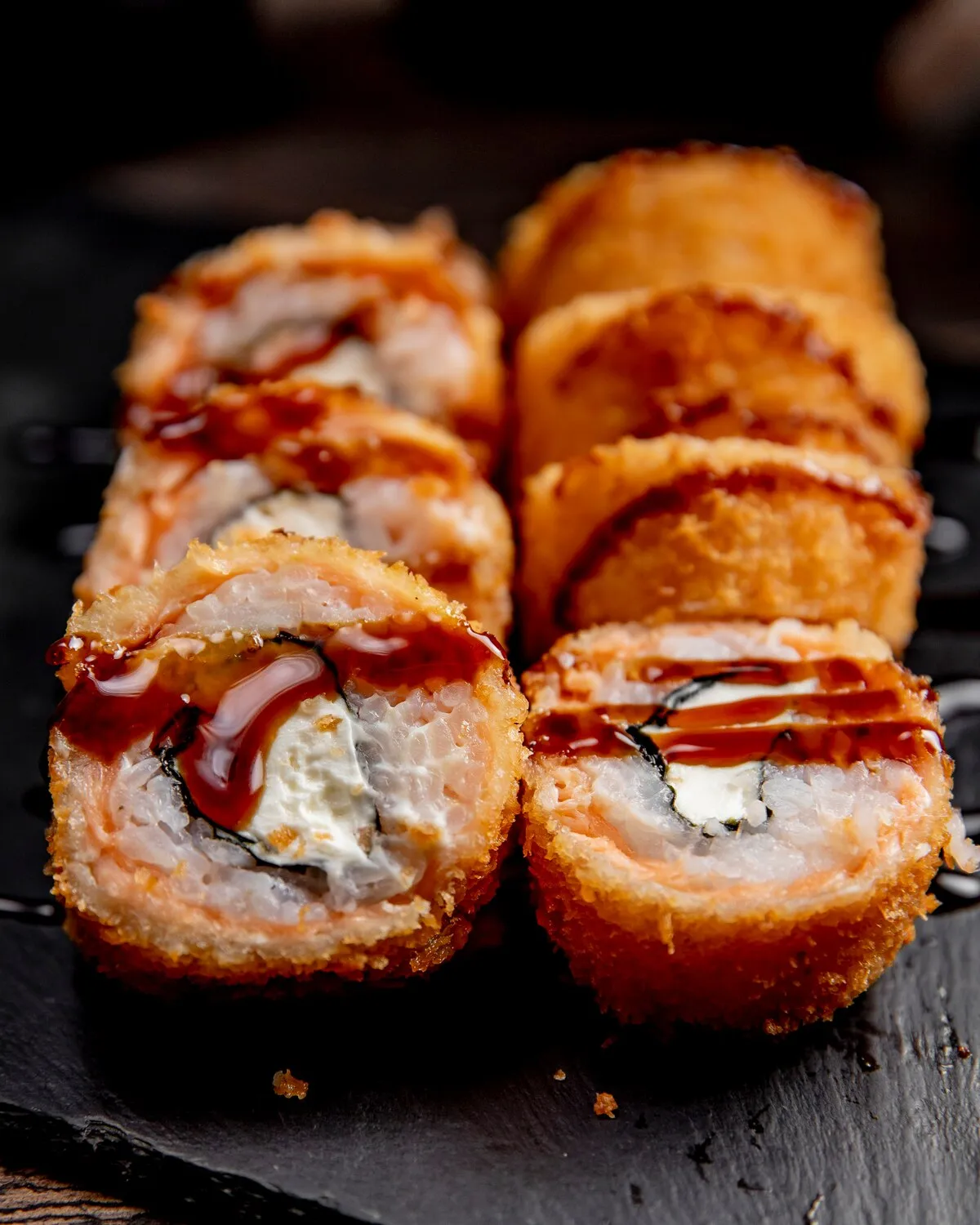
Hot Roll
Breaded and deep-fried sushi roll
Nutrition Facts
* The % Daily Value (DV) tells you how much a nutrient in a serving of food contributes to a daily diet. 2,000 calories a day is used for general nutrition advice.
Hot rolls, or deep-fried sushi rolls, are a relatively recent innovation, appearing primarily in the United States as part of the Americanized sushi trend. They don't have deep historical roots in traditional Japanese cuisine and were created to appeal to Western palates, often preferring cooked ingredients and bolder flavors.
Hot rolls are strongly associated with the Americanized sushi scene, particularly in casual dining restaurants and sushi bars. They represent a fusion of Japanese culinary techniques with American preferences for deep-fried foods and bolder flavors.
Accessibility
Hot rolls are often seen as a more accessible entry point to sushi for those unfamiliar with raw fish. The cooked ingredients and familiar flavors make them less intimidating.
Fusion Cuisine
They exemplify the trend of fusion cuisine, where different culinary traditions are combined to create new and innovative dishes. This reflects the diverse culinary landscape of the United States.
Customization
Hot rolls are highly customizable, allowing chefs to experiment with different fillings, sauces, and toppings to cater to specific tastes and dietary preferences.
The flavor profile of a hot roll is a fusion of savory, crunchy, and sometimes sweet or spicy elements. The frying process adds a distinct richness and textural contrast to the otherwise delicate sushi components.
The dominant flavors typically include the umami of nori (seaweed) and sushi rice, complemented by the savory fillings like cooked seafood (crab, shrimp, or salmon), cream cheese, and avocado. The breading, often panko breadcrumbs, provides a crispy texture and mild, toasted flavor. Sauces, such as spicy mayo, eel sauce (unagi sauce), or sweet chili sauce, are commonly drizzled on top to enhance the overall flavor profile with sweetness, spice, or richness.
Oil Temperature
Maintain a consistent oil temperature (around 350-375°F) for even frying. Too low and the roll will be greasy; too high and it will burn quickly.
Breadcrumb Quality
Panko breadcrumbs provide the best crispy texture. Ensure the breadcrumbs are fresh and dry for optimal results.
Roll Stability
Ensure the sushi roll is tightly rolled before breading to prevent it from falling apart during frying.
Sauce Selection
Complement the roll's fillings with appropriate sauces. Spicy mayo, eel sauce, or sweet chili sauce all work well depending on the other ingredients.
Explore additional Sushi dishes and restaurants
Explore SushiDiscover top dining spots and culinary experiences in Porto Alegre.
Explore Porto AlegreLearn more about the food culture, restaurant scene, and culinary heritage of Brazil.
Explore Brazil